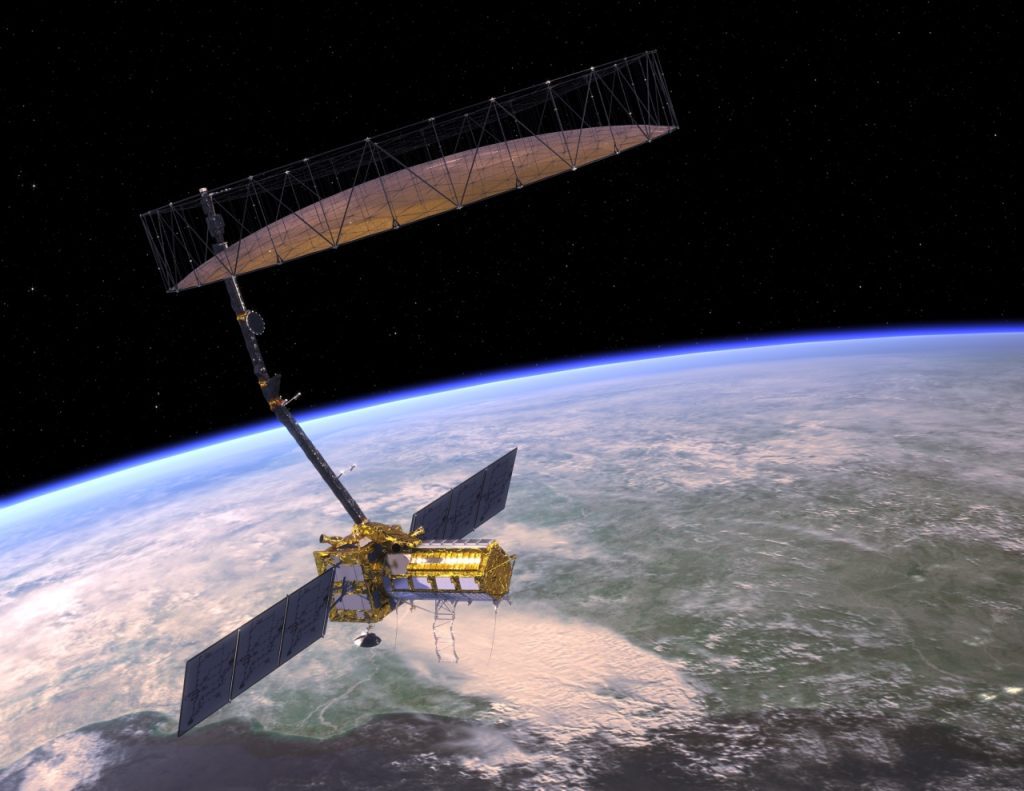WASHINGTON — Changes to a large bendable antenna on a shared U.S.-Indian radar spacecraft will postpone its launch, probably until the second half of the year.
In a March 22 announcement, NASA stated that a new launch date for the NASA-ISRO Synthetic Aperture Radar (NISAR) mission will be determined by the end of April due to efforts to protect the spacecraft’s reflector, a 12-meter-wide antenna, from extreme temperatures when folded.
“Testing and analysis revealed a potential for the reflector to experience higher-than-expected temperatures when folded during flight,” NASA said. To prevent these higher temperatures, a “special coating” will be applied to the antenna to enhance its reflection of sunlight.
NASA stated that this work requires transporting the antenna, currently located with the rest of the NISAR spacecraft in India, to a facility in California for the application of the coating. NASA did not specify the duration of the coating application process, as well as the shipping of the antenna to California and back to India.
NASA officials had previously mentioned a spring launch for NISAR. During a town hall about the mission at the Fall Meeting of the American Geophysical Union in December, project officials anticipated the mission to launch by the end of March.
In a recent interview with the Times of India, S. Somanath, chairman of the Indian space agency ISRO, said that the launch of NISAR would be delayed from the first quarter of the year, but provided minimal details about the reasons, only noting it was not related to the Geosynchronous Satellite Launch Vehicle (GSLV) Mark 2 rocket that will carry it to space.
“NISAR is still undergoing testing. It looks like the satellite may be delayed,” he said. Asked when the launch would take place, he said the “second half” of the year.
NISAR is the first Earth science spacecraft collaboration between NASA and ISRO and represents one of the biggest partnerships between the agencies in general, with NASA alone spending more than $1 billion in formulating and developing the mission. NASA is providing an L-band radar and engineering payload, while ISRO is providing the S-band payload, spacecraft bus and launch vehicle.
The radars on NISAR will be capable of advanced radar imaging to support a wide range of Earth science needs, from measuring the flow rates of glaciers to volcanic activity. The spacecraft will be able to map the entire Earth every 12 days.
Development of what would become NISAR started in response to recommendations from an Earth science decadal survey in 2007, but the mission is now playing a key role in NASA’s implementation of the latest Earth science decadal survey in 2018. That study recommended pursuing five “designated observables” with various missions, including one for surface deformation and change, or SDC, that would include a radar imaging payload.
NASA had been studying concepts for SDC as part of its overall Earth System Observatory, a suite of missions to implement those designated observables, but had planned to delay any development of that mission in order to incorporate lessons learned from NISAR. However, as part of the Earth System Observatory is being restructured as part of the budget request for 2025 NASA announced on March 11 that it will no longer develop an SDC mission, and will use data from NISAR instead
Karen St. Germain, director of NASA’s Earth science division, mentioned at a meeting on March 20 that the SDC mission would likely start at the end of the decade.
Karen St. Germain explained on March 20 that they terminated the study for SDC to focus on launching NISAR this year and plan to consider a similar effort in the next decade.









